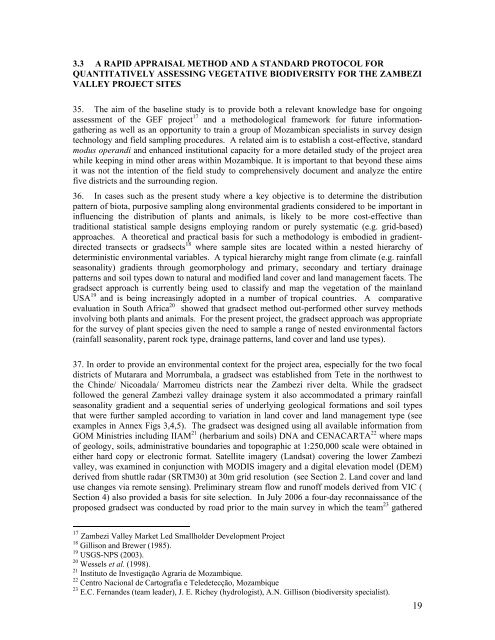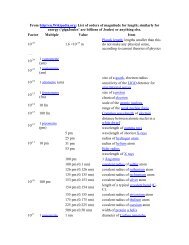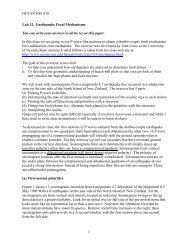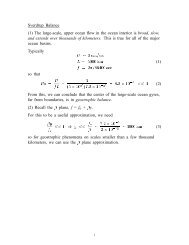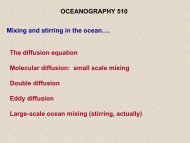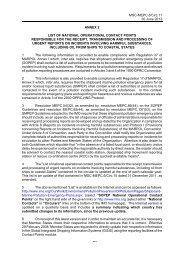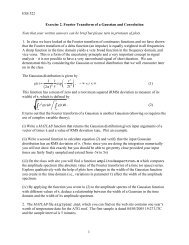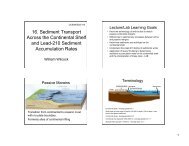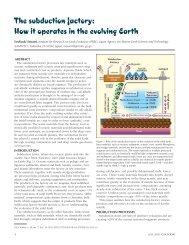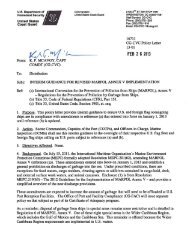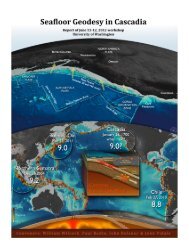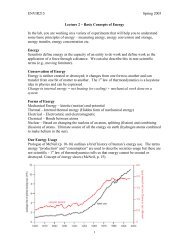LOWER ZAMBEZI RIVER BASIN BASELINE DATA ON LANDUSE ...
LOWER ZAMBEZI RIVER BASIN BASELINE DATA ON LANDUSE ...
LOWER ZAMBEZI RIVER BASIN BASELINE DATA ON LANDUSE ...
Create successful ePaper yourself
Turn your PDF publications into a flip-book with our unique Google optimized e-Paper software.
3.3 A RAPID APPRAISAL METHOD AND A STANDARD PROTOCOL FORQUANTITATIVELY ASSESSING VEGETATIVE BIODIVERSITY FOR THE <strong>ZAMBEZI</strong>VALLEY PROJECT SITES35. The aim of the baseline study is to provide both a relevant knowledge base for ongoingassessment of the GEF project 17 and a methodological framework for future informationgatheringas well as an opportunity to train a group of Mozambican specialists in survey designtechnology and field sampling procedures. A related aim is to establish a cost-effective, standardmodus operandi and enhanced institutional capacity for a more detailed study of the project areawhile keeping in mind other areas within Mozambique. It is important to that beyond these aimsit was not the intention of the field study to comprehensively document and analyze the entirefive districts and the surrounding region.36. In cases such as the present study where a key objective is to determine the distributionpattern of biota, purposive sampling along environmental gradients considered to be important ininfluencing the distribution of plants and animals, is likely to be more cost-effective thantraditional statistical sample designs employing random or purely systematic (e.g. grid-based)approaches. A theoretical and practical basis for such a methodology is embodied in gradientdirectedtransects or gradsects 18 where sample sites are located within a nested hierarchy ofdeterministic environmental variables. A typical hierarchy might range from climate (e.g. rainfallseasonality) gradients through geomorphology and primary, secondary and tertiary drainagepatterns and soil types down to natural and modified land cover and land management facets. Thegradsect approach is currently being used to classify and map the vegetation of the mainlandUSA 19 and is being increasingly adopted in a number of tropical countries. A comparativeevaluation in South Africa 20 showed that gradsect method out-performed other survey methodsinvolving both plants and animals. For the present project, the gradsect approach was appropriatefor the survey of plant species given the need to sample a range of nested environmental factors(rainfall seasonality, parent rock type, drainage patterns, land cover and land use types).37. In order to provide an environmental context for the project area, especially for the two focaldistricts of Mutarara and Morrumbala, a gradsect was established from Tete in the northwest tothe Chinde/ Nicoadala/ Marromeu districts near the Zambezi river delta. While the gradsectfollowed the general Zambezi valley drainage system it also accommodated a primary rainfallseasonality gradient and a sequential series of underlying geological formations and soil typesthat were further sampled according to variation in land cover and land management type (seeexamples in Annex Figs 3,4,5). The gradsect was designed using all available information fromGOM Ministries including IIAM 21 (herbarium and soils) DNA and CENACARTA 22 where mapsof geology, soils, administrative boundaries and topographic at 1:250,000 scale were obtained ineither hard copy or electronic format. Satellite imagery (Landsat) covering the lower Zambezivalley, was examined in conjunction with MODIS imagery and a digital elevation model (DEM)derived from shuttle radar (SRTM30) at 30m grid resolution (see Section 2. Land cover and landuse changes via remote sensing). Preliminary stream flow and runoff models derived from VIC (Section 4) also provided a basis for site selection. In July 2006 a four-day reconnaissance of theproposed gradsect was conducted by road prior to the main survey in which the team 23 gathered17 Zambezi Valley Market Led Smallholder Development Project18 Gillison and Brewer (1985).19 USGS-NPS (2003).20 Wessels et al. (1998).21 Instituto de Investigação Agraria de Mozambique.22 Centro Nacional de Cartografia e Teledetecção, Mozambique23 E.C. Fernandes (team leader), J. E. Richey (hydrologist), A.N. Gillison (biodiversity specialist).19


